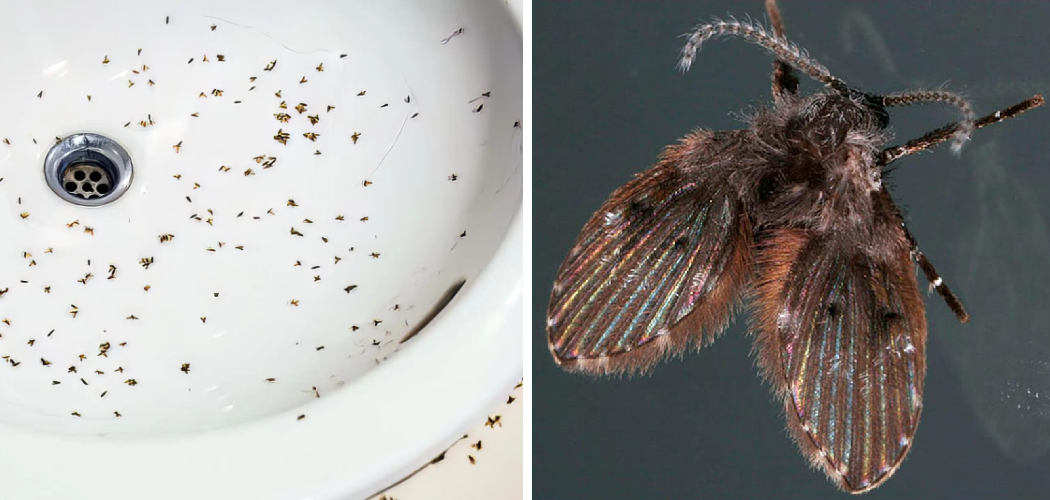Drain fly larvae in toilets can become a frustrating and unsightly problem if left unchecked. These pests thrive in moist environments, making your bathroom an ideal breeding ground.
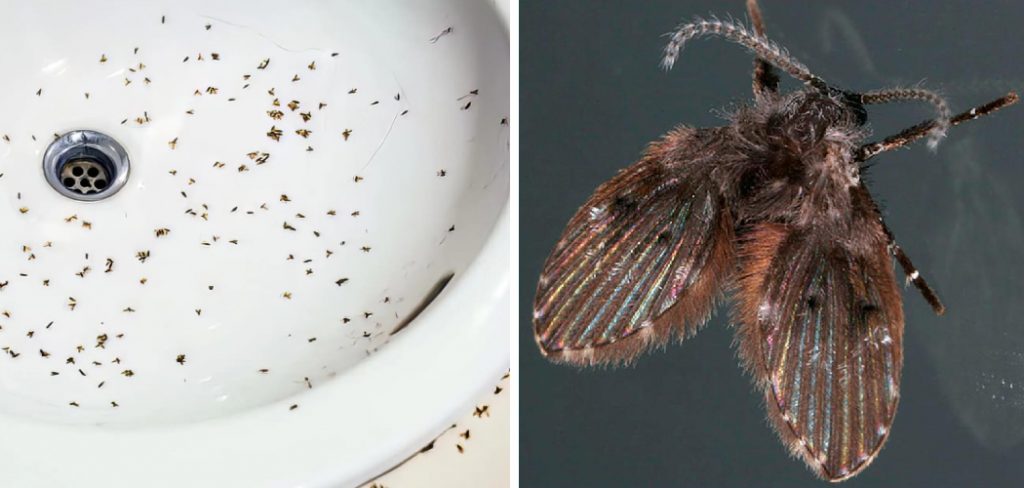
Understanding how to get rid of drain fly larvae in toilet systems is crucial, as their presence can indicate a larger issue related to hygiene and plumbing. The discomfort and potential health risks associated with drain fly infestations, such as unpleasant odors and bacterial infections, highlight the importance of prompt action.
This article will provide effective removal methods, including initial inspections, thorough cleaning techniques, and chemical and natural remedies. By following our comprehensive guide, you can eliminate drain fly larvae and prevent their recurrence, ensuring a cleaner and healthier bathroom environment.
Understanding Drain Fly Larvae
What Are Drain Fly Larvae?
Drain fly larvae are the immature stage of drain flies, also known as moth flies, which thrive in moist environments such as sinks, shower drains, and toilet pipes. These larvae are small, typically measuring about 1/8 inch long, and have a distinctive, elongated shape.
They are often pale in color and can be difficult to spot until they are in large numbers. Commonly found in areas where organic matter accumulates, drain fly larvae develop in biofilms that form within the moist environments of your plumbing system.
Why They Are a Problem
The presence of drain fly larvae can pose several health risks, primarily due to their association with decaying organic matter, which can harbor harmful bacteria. This can lead to unpleasant odors and contribute to unsanitary conditions in your bathroom.
Signs of infestation may include adult flies buzzing around the toilet or sink, slow drainage due to clogged pipes, or the visible presence of larvae in the drain itself. Recognizing these signs early on is essential for effective intervention and maintaining a healthy living space.
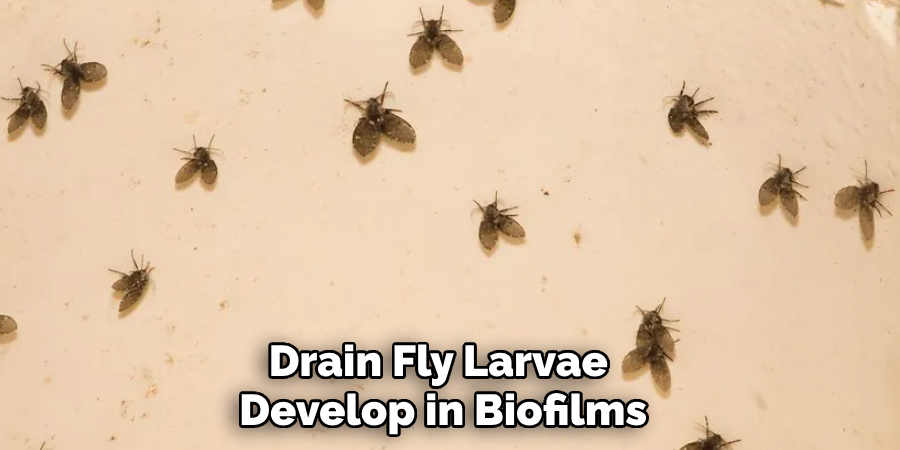
Initial Inspection and Cleaning
Step 1: Inspect the Toilet and Drain
How to Do It: Begin by closely checking the toilet and the surrounding drain areas for any visible signs of larvae or adult flies. Look for organic debris that might accumulate in the water, as well as any potential stagnant water that could serve as a breeding ground for drain flies. Utilize a flashlight if needed to inspect dark or hidden corners.
Why It’s Important: Identifying the source of the infestation enables you to target the problem directly, making subsequent cleaning and treatment more effective.
Step 2: Clean the Toilet and Surrounding Area
How to Do It: Use a toilet brush and disinfectant cleaner to scrub the interior of the toilet, thoroughly cleaning the rim and beneath the seat. Additionally, wipe down all surrounding surfaces, including the exterior of the toilet and any nearby floors or walls that may have come into contact with debris.
Why It’s Important: A thorough cleaning is crucial as it helps eliminate any larvae and eggs present, significantly reducing the breeding grounds where flies can thrive. By keeping these areas clean, the likelihood of future infestations is diminished.
How to Get Rid of Drain Fly Larvae in Toilet: Removing Drain Fly Larvae
Step 1: Use Chemical Drain Cleaners
How to Do It: To begin, apply a chemical drain cleaner specifically formulated to eliminate organic matter in your drains. Carefully follow the manufacturer’s instructions regarding the amount to use and the application process.
Be sure to wear protective gloves and eyewear, as these products can be harmful. Pour the cleaner directly into the drain and allow it to sit for the recommended time before flushing with water.
Why It’s Effective: Chemical cleaners are designed to break down organic matter where larvae typically feed, effectively killing them and destroying their habitat. This reduction in organic material eliminates existing larvae and helps prevent future infestations.
Step 2: Use Natural Remedies
How to Do It: For those preferring a natural approach, another effective method involves pouring a mixture of baking soda and vinegar down the drain. Start by adding about half a cup of baking soda, followed by the same amount of vinegar.
Allow the mixture to fizz and work for about 30 minutes, then flush it with hot water. Alternatively, you can use hydrogen peroxide as a powerful solution, pouring it down the drain similarly.
Why It’s Effective: The chemical reaction between baking soda and vinegar creates carbon dioxide, which helps to dislodge and kill larvae in the drain. Hot water further aids in flushing away any debris, while hydrogen peroxide provides a disinfecting quality that effectively clears out lingering residue.
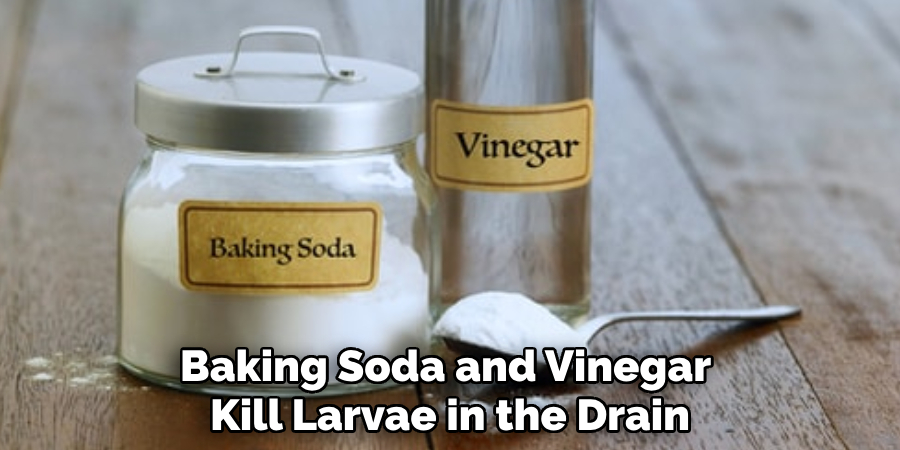
Step 3: Use a Plumbing Snake or Brush
How to Do It: For a more hands-on approach, insert a plumbing snake or a long brush into the drain to physically remove larvae and debris. Carefully navigate the tool through the drain, rotating it as necessary to ensure a thorough cleaning. Be persistent and gentle to avoid damaging the pipes while ensuring that you effectively remove any caught larvae or organic matter.
Why It’s Effective: Physical removal is crucial, as it can eliminate larvae and debris that may not be reached by chemical or natural remedies alone. This method ensures that any remaining biological material is cleared out, addressing the infestation more comprehensively and helping to restore a clean and healthy drain environment.
Preventing Future Infestations
Regular Cleaning
How to Do It: Maintain a regular cleaning schedule for your toilet and drains using disinfectants and cleaning solutions. Focus on scrubbing the toilet bowl, cleaning surfaces around the toilet, and flushing your drains with hot water mixed with vinegar or baking soda at least once a week. This proactive approach can significantly hinder the development of drain fly larvae.
Why It’s Important: Regular cleaning helps prevent the buildup of organic matter that can attract drain flies. By removing debris and biofilms, you create a less hospitable environment for these pests, thus reducing the chances of infestation.
Improve Drainage and Ventilation
How to Do It: Ensure that your toilet and drainage system are functioning properly. Fix any leaks as quickly as possible, and ensure that there is adequate ventilation in the bathroom to aid in moisture control. Installing a dehumidifier can also help maintain lower humidity levels.
Why It’s Important: Proper drainage and ventilation reduce the likelihood of moisture buildup, which attracts drain flies. Ensuring that your bathroom remains dry and well-ventilated is crucial in preventing not only drain flies but also a host of other pests and hygiene issues. Regular maintenance and quick repairs are essential components of an effective pest prevention strategy.
When to Call a Professional
Persistent Infestation
What to Do: If the problem persists despite your best efforts with cleaning and DIY treatments, it may be time to seek professional assistance. Consulting a professional plumber or pest control expert can provide a thorough inspection and treatment tailored to your situation.
These experts have access to specialized equipment and methods that can effectively eliminate stubborn drain fly infestations, ensuring that the problem is resolved and your home remains pest-free.
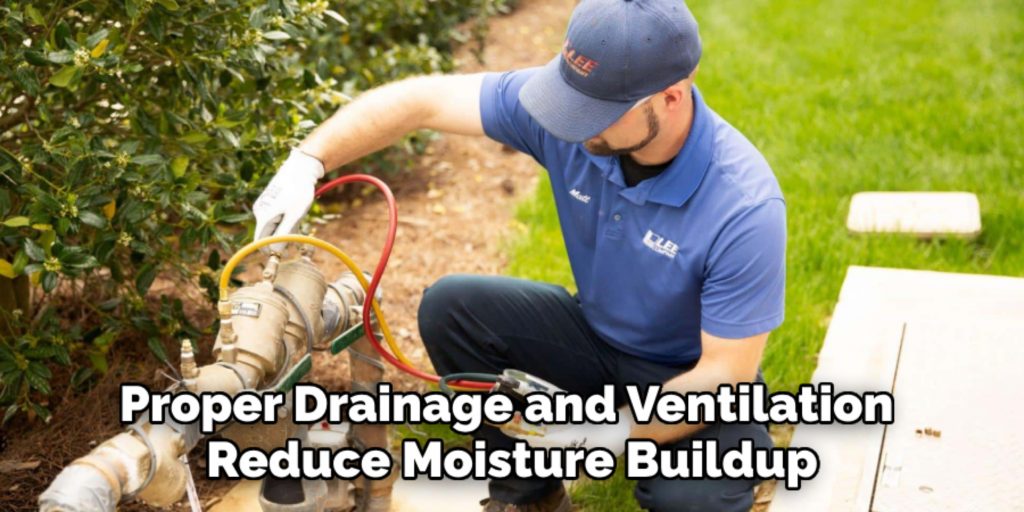
Complex Issues
What to Do: In cases involving complex plumbing systems or severe infestations, enlisting professional help is crucial. Experts are equipped to address intricate plumbing issues that might be allowing flies to thrive hidden within the system. Their comprehensive approach will target the visible signs of infestation and address the root causes, providing you with a long-term solution for maintaining a clean and healthy environment.
Frequently Asked Questions (FAQs)
What Are Drain Flies and How Do I Identify Them?
Answer: Drain flies, also known as moth flies, are small, dark-colored insects that often appear near sinks, drains, and other damp areas. They typically have fuzzy bodies and large wings that resemble those of moths. Their larvae thrive in organic matter found in drains, making it essential to address any infestation promptly.
How Can I Tell if I Have a Drain Fly Infestation?
Answer: Signs of a drain fly infestation include frequent sightings of adult flies hovering near drains, a musty smell in bathrooms or kitchens, and spotting of small larvae in standing water or decaying organic material. If you notice these indicators, it’s crucial to take action.
Are Drain Flies Harmful to My Health?
Answer: While drain flies are generally not harmful to humans, they can indicate poor sanitation and hygiene in your home. The presence of drain flies may suggest an underlying issue related to the buildup of organic matter in your plumbing, which can lead to unpleasant odors and potential health risks if left unaddressed.
How Long Does It Take to Get Rid of Drain Flies?
Answer: The time it takes to eliminate a drain fly infestation can vary based on the severity of the problem and the methods used.
With diligent attention to cleaning, treatment, and prevention measures, most infestations can be significantly reduced within a week. However, it may take longer to completely eradicate them, especially if larvae and debris are present in hard-to-reach areas.
Can I Prevent Drain Flies from Returning?
Answer: Yes, preventative measures are vital in keeping drain flies at bay. Regular cleaning of drains and toilets, improving ventilation and drainage in your bathroom, and promptly addressing any leaks will create an environment that is less attractive to these pests. Consistently monitoring for early signs of infestations can also be beneficial.
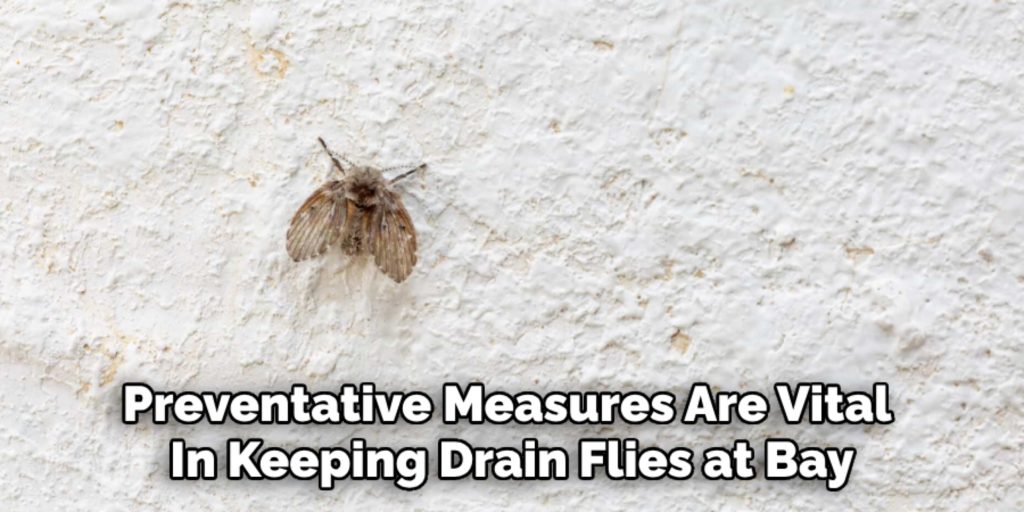
Conclusion
In summary, effectively removing drain fly larvae involves a series of key steps. Start with thorough inspections to identify areas of infestation, followed by targeted cleaning methods such as using chemical cleaners, natural remedies like baking soda and vinegar, and physical techniques including plumbing snakes.
Prevention is equally crucial; maintaining a regular cleaning schedule and improving drainage and ventilation can significantly reduce the likelihood of future infestations. Remember, the sooner you act when you spot signs of drain fly larvae, the better you can avoid more serious problems. To maintain a hygienic bathroom environment, promptly engage in measures on how to get rid of drain fly larvae in toilet. By being proactive, you ensure a clean and pest-free home.

